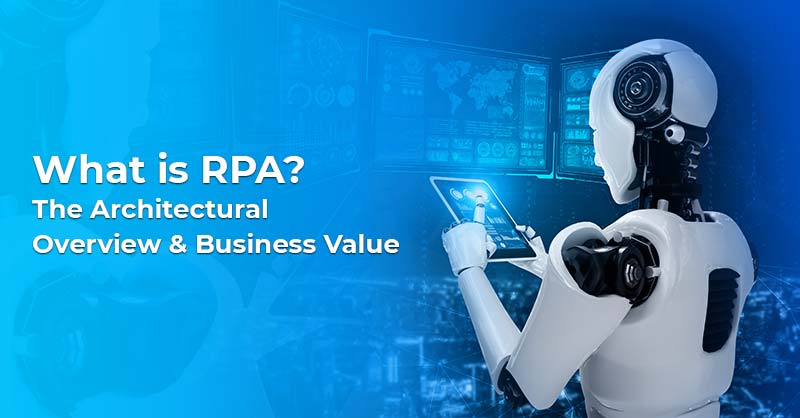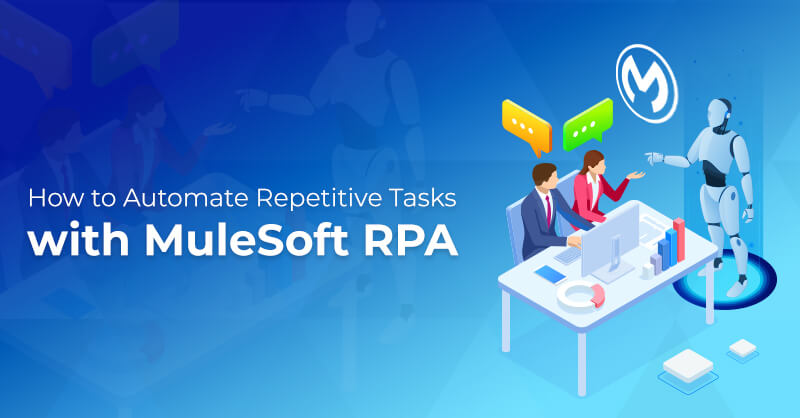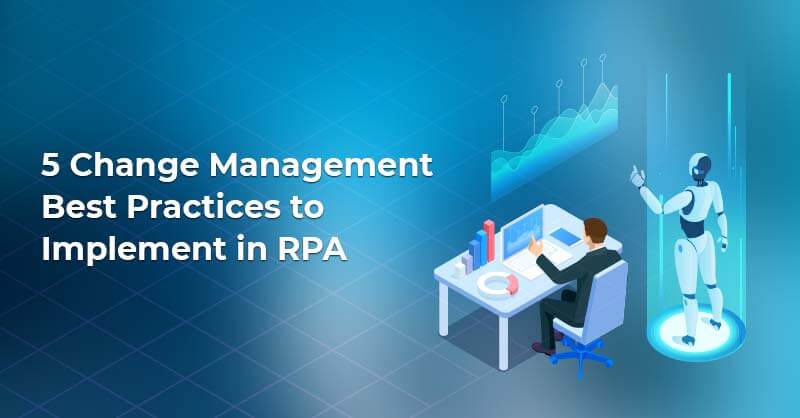Intelligent Automation for Future Hybrid Workforce
Written by Harini Krish
Lead Technical Content WriterWhen people think about automation, they often assume it’s a zero-sum game: The work once done by humans is now done by technology. But this assumption misses the greater potential offered by today’s intelligent automation (IA): a hybrid workforce in which human workers collaborate with digital workers to enable humans to work more effectively — and with greater satisfaction. Additionally, it serves as an accelerator for digital transformation, allowing systems, business processes, and business leaders to collaborate across departments, agencies, and even governmentwide.
Traditionally, Robotic Process Automation (RPA) was focused on automating routine tasks, like onboarding new employees, in the style of robotic desktop automation (RDA). RDA can be installed on a single machine for generating reports or automating Excel spreadsheet processing. But intelligent automation, which is Robotic Process Automation enhanced with technologies such as machine learning (ML) and artificial intelligence (AI), can do considerably more. Read this blog to know What is AI? How it Differs from RPA?

The future is now, and a hybrid workforce offers more: more security, more capabilities, more control, and more transparency. It’s been proven time and again that leveraging a digital workforce has gifted the public sector the ability to “do more with less.” A hybrid workforce that works across environments can enable business leaders to handle complex, enterprise-wide challenges and increase organizational efficiency. It can also address agencies’ aging workforces and the steady loss of intellectual capital to the private sector. You may be interested to read this whitepaper to discover how you can Transform Claim Processing with Intelligent Automation.
Intelligent Automation and Tomorrow’s Hybrid Workforces
Challenge
Insufficient Talent and Resources Elastic, highly scalable cloud infrastructures — and the layers of complexity they bring — make a compelling case for additional automation. But agencies also have workforce and resource challenges that make adopting IA necessary. Furthermore, the heavy reliance on remote workforces compelled by the COVID-19 pandemic — and the mobile, hybrid workplace that agencies will eventually return to — are other reasons for automating more than simple tasks.
- Demand Exceeds Capacity: As offices around the world closed their doors due to COVID-19, the demand for online services grew, pressuring agencies to improve their operations and enhance constituents’ online experiences. But many agencies at the federal, state and local levels, bound by tight budgets and skills shortages, were already working at capacity. As demand increased, citizen satisfaction declined.
- The Burden of Technical Debt: A persistent drag on any agency’s digital transformation is the amount of critical IT resources that are tied up in managing legacy systems. Outdated, siloed systems prevent agencies from easily accessing, analyzing and sharing their data, hindering their ability to increase efficiencies and improve services.
- Cybersecurity in the Crosshairs: Security is always a top concern for agencies, and it becomes more critical as their infrastructures grow beyond on-premises systems into the cloud and out to the edge. Agencies at all levels have an urgent need to strengthen their cybersecurity postures, especially by decreasing human error, which is the main cause of 95% of security breaches.
Solution
- Intelligent Automation: Intelligent automation makes it possible for agencies to deploy solutions that address very technical challenges while also integrating seamlessly with how employees work.
- The Evolution of Automation: IA represents the next step in automation, working holistically with human employees and digital workers to create efficiencies across the enterprise. It builds on the basic automation of rote tasks, as seen with RDA, and the expanded ability of RPA to extract and process data across systems. IA incorporates RPA with technologies such as AI, ML and natural language processing to automate entire processes and workflows. It can improve the citizen experience — through better contact center support, intelligent case management, efficient service delivery and personalized experiences — with “multithreaded” digital workers capable of multiple tasks and processes as opposed to working on a one-to-one ratio.
- Employing a Hybrid Workforce: A key ingredient of IA is its integration with a hybrid workforce of human and digital workers to collaborate on operations ranging from service requests to cybersecurity. Digital workers are multi-tasking software robots capable of managing repetitive, tedious tasks and handling complex questions, such as analyzing historical workloads to optimize workflows. They can, for example, provision virtual machines in accordance with demand, giving agencies more flexible scalability in the cloud.
- Efficiency and Getting Stuff Done: As society moves inevitably toward the conditions making up the future of work, the fundamental concept of getting stuff done (GSD) is emerging as an essential principle. With GSD a priority, the overriding consideration becomes selecting the proper combination of resources at hand (both human and digital). IA also allows managers to distribute work more efficiently — letting digital workers handle routine tasks and freeing humans for more mission-focused activities.
Best Practices for Adopting Intelligent Automation
- Preparing for IA - Implementing IA involves a fundamental shift in how agencies approach IT operations. As with any enterprise-wide change, it works best from the top down and requires that contracting procedures are in place to accommodate the change. Senior leadership should ensure that policies and procedures are in place for incorporating IA and that they have made a digital workforce a priority.
- Changing the Culture - IA is part of a cultural shift toward a hybrid workforce. It uses the latest technology to enhance operations, increase efficiencies and improve services, which involves more than technology. The GSD paradigm, for instance, should be viewed as a human workforce transformation project — as part of building a 21st century workforce — versus a solely technical IT project. Oftentimes change sparks opposition. Barriers could arise when adopting intelligent automation, so organizations should plan for them.
- Fear: Provide various forms of education and datadriven statistics.
- Employee alienation: Involve employees in the process from the start and keep them informed throughout.
- Boosting excitement: Include employee participation in unique ways to personalize your digital workforce.
- Dismay: Set realistic goals & expectations; have a clear plan.
- Low morale: Tap into people’s emotions with success stories & personal goals.
- Job takeover: Hire from within
- Contracting for the Future - The requirements for RFPs or RFIs for automated systems are still in the early stages. Government should be sure to allow IA-related factors on its solicitations. For example, contracting officers should ask a bidder offering digital labor questions, such as what percentages of human and digital workers they are proposing. Since agencies are expected to perform a lot more of them, preparing for IA and DW solicitations and bids should be a priority. Many don’t have the knowledge in-house to implement and maintain an IA workforce, so partnering with a provider that has the right tools and experience will likely be effective in making the transition.
- Strengthening Security - IA can enable significant improvement in cybersecurity, including in these key areas:
- Application inventory tracking: By automating the discovery and classification of sensitive data, IA can ensure data flows between legacy and new systems. Artificial intelligence and machine learning can further automate risk classifications. This not only eliminates the element of human error, but it improves compliance with programs that can run with perfect accuracy 24/7.
- Data loss detection: Easily created digital workers, deployed and orchestrated in the IA platform, can discover potential data loss and kick-start new security controls to correct problems and prevent further loss.
- Threat exposure: IA improves detection and response times in the event of security breaches, and automatically deploys security controls when vulnerabilities are discovered.
Summary
Interested in finding the perfect automation tools & solution for your company? Royal Cyber is joining hands with Automation Anywhere on 16th June for an in-person event where we will answer all your questions regarding enterprise-level RPA and intelligent automation. Learn how this Integrated Communications Company save thousands work hours with RPA.
Our industry SME, Asif Hussain, RPA Solution Architect from Royal Cyber, and Geoff Martin, Automation Lead for Midwest at Automation Anywhere, will educate you on how RPA complements intelligent automation through some use cases for different verticals and industries.



